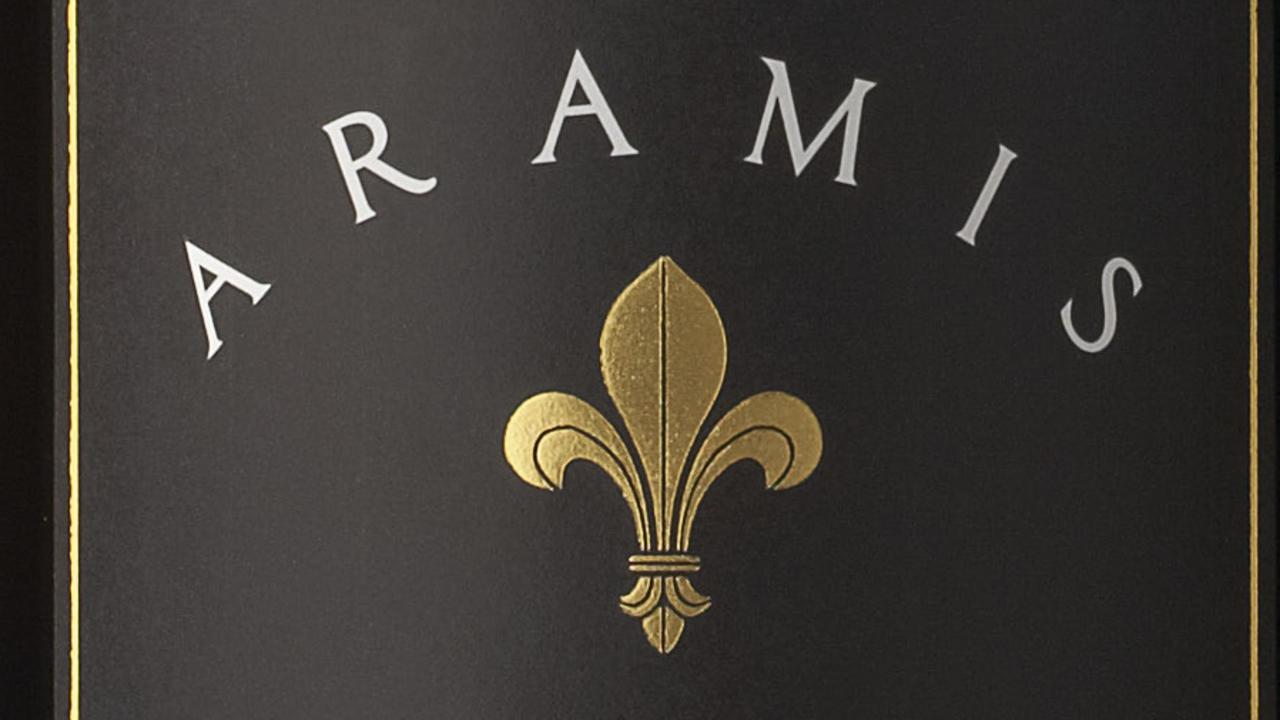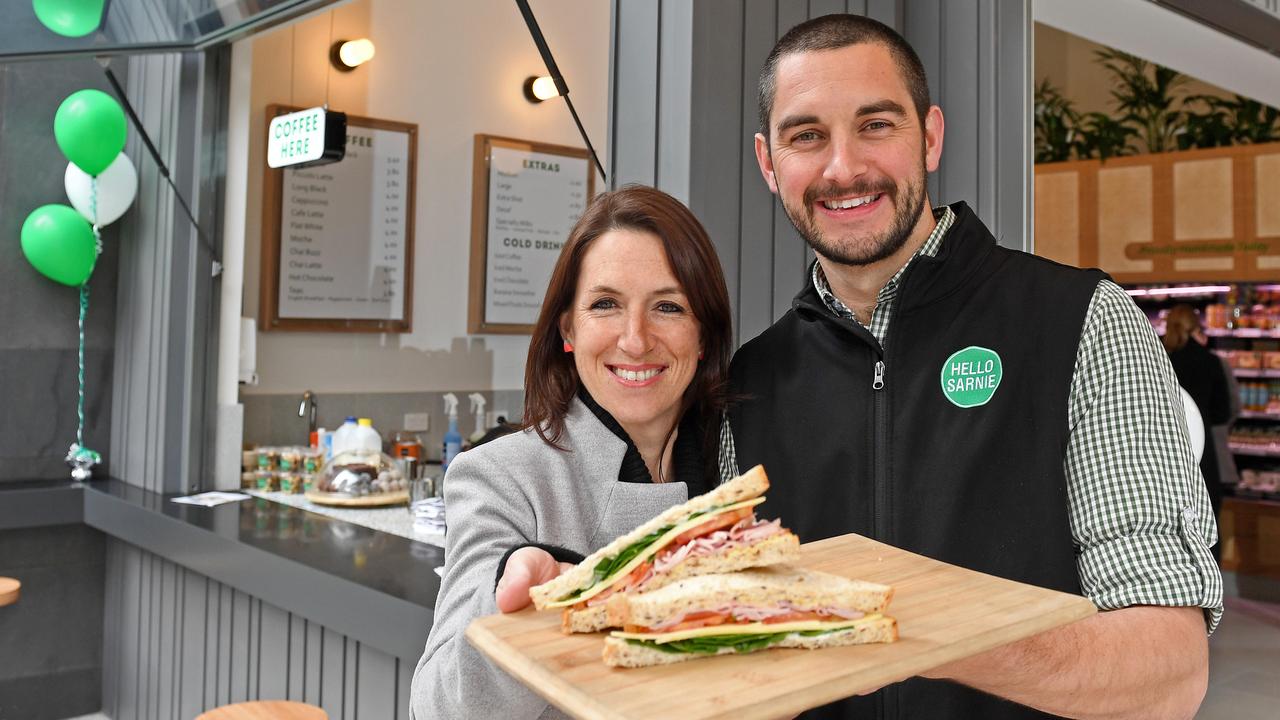The secrets behind Nu’s Thai success
Nu Suandokmai began learning the secrets of cooking when he was a young boy on his family’s farm in central Thailand, writes Simon Wilkinson

delicious SA
Don't miss out on the headlines from delicious SA. Followed categories will be added to My News.
When Nu Suandokmai was still a little boy, he began to help in the family kitchen, learning how to chop different ingredients the right way, developing his skills until he graduated to making the pastes that are the backbone of Thai food.
Then, when his mother Prateung began work feeding thousands of students at a Bangkok university, he was again at her side, becoming quicker and more disciplined in his craft, and expanding his repertoire of popular dishes.
These are the lessons that have continued to underpin his cooking as he dazzles diners in his latest restaurant, Lantern by Nu, in Adelaide.

The relationship with his mum is at the heart of a new book, Fire and Flavour: Nu’s Food, which as well as sharing some of his favourite recipes gives an insight into his upbringing and the traditional way his family continues to live on a farm in central Thailand.
Co-author Nigel Hopkins and photographer Tony Lewis travelled to the property and discovered how food was grown, harvested and cooked in a way that hasn’t changed much in the past 50 years.

The family continues to be largely self-sustaining. While rice and sugar cane are the two main crops, other fruit, vegetables and herbs are harvested for personal use, and fish are caught in irrigation channels.
“We grow everything on the farm,” Nu says. “We don’t buy any vegetables.”
Cooking is done in a kitchen with the most basic of equipment or on a charcoal-burning brazier on the veranda.

It’s a long way from the gleaming stainless steel of the modern restaurant kitchens where Nu has built his reputation since following an Australian girlfriend – now wife, Jane – to Adelaide in 1988 and finding a job in a local Thai eatery.
In 2000 he struck out on his own, opening Nu Thai in Gouger St, quickly developing a strong following among diners for the uncompromising, authentic flavours on offer in dishes such as crispy chilli barramundi and chargrilled pork neck salad, both favourite family recipes.
He then moved to Bali to oversee a Thai restaurant in the Ritz Carlton hotel and then Sydney, where he again took the plunge and opened his own place.
After returning to Adelaide, he dabbled in a few projects (including French cooking at Cliche), before settling on Lantern by Nu. Here, in an old warehouse a few blocks from Chinatown, he has created “a magical world of fire and flavour, deep hospitality and Thai food once again cooked without compromise”.
It’s the food of his mother.
“My mother taught me how to cut things and the right quantities of each ingredient,” Nu says. “In a sour curry, for example, there would be more wild ginger and less lemongrass. I learnt the right flavour balance so I could taste a sauce and know what to add.”
Lantern by Nu, 10 Selby St, city, 7078 3559, lanternbynu.com.au
THE FARM KITCHEN
This is an extract from Fire and Flavour: Nu’s Food, by Nu Suandokmai and Nigel Hopkins
NU Suandokmai’s mother, Prateung, is old now, but she still spends much of her life on the farm run by two of her daughters, Na and Lek, 100km north of Bangkok in the province of Ang Thong.
The farm and the traditional rhythm of country life that surrounds it continue much as they have for the past century. There have been some changes. Electricity arrived a few years ago, but they still rely on the daily delivery of ice to fill the icebox. The buffalo have gone, replaced by an “iron buffalo” to work the surrounding fields of rice and sugar cane.
For Lek, now in her mid-60s, who oversees some 40ha of farmland filled with rice, sugar cane, fruits and vegetables, fish, ducks and chicken, life hasn’t changed much at all over the past half-century.
She still rises at 4 am each day – “before the chickens” – works a 12-hour day, and is in bed by 8pm. She has no television or airconditioning and few of the comforts of city life.
She has lived on this farm all her life and, like her three sisters and two brothers, she learnt to cook from her mother. It is Prateung’s cooking that Lek – like her brother, Chef Nu – treasures and perpetuates.
It is a style of cooking and a way of life that no longer exists in Thailand’s bigger towns and cities, and is fast disappearing even in rural regions where Thailand’s most authentic, original cooking is still to be found.
Food preparation in the traditional Thai lifestyle was simple. The ingredients used were close to hand and changed with the seasons, with an emphasis on fish and other animals from rivers and the sea. Traditional folk knowledge provided ways to season them to accent their flavour and enhance the appetite.
The dishes were nourishing and strengthened the body – they had to: they were feeding farmers.
Anyone who feels intimidated by the thought of cooking Thai food need only take one look inside the door.
Authentic Thai food has its origins in simplicity, made from ingredients that are close at hand.
Food is prepared, chopped or crushed and mixed using a mortar and pestle, while sitting on the floor – an all-purpose space where basins can be set down to wash vegetables or fish, or clean dishes and utensils. There’s no refrigerator – fresh herbs and vegetables (and drinks) are kept chilled in the icebox.
There’s a single gas burner in the corner, a rack of shelves for storage against a wall.
But the real action is likely to take place over a traditional charcoal burning brazier that can be moved from back verandah to front verandah, depending on where the smoke – and smells – are being blown and depending on the method of cooking: chargrill, deep-fry or slow simmer.
Lek still makes her own charcoal from coconut husks and tamarind tree logs, selling surplus bags locally to supplement her income, which mostly comes from rice – she keeps just a tonne of the 30 tonnes she grows each year.
There are other, more inventive, ways of cooking, including a sort of bush oven in which a chicken is suspended over a water-filled bottle (to prevent drying out), then covered with a large tin can over which rice straw is set alight. After several such firings, the bird will be well cooked and tender. Or sweet sticky rice pressed into lengths of thick green bamboo to be steamed next to a fire, then split open to reveal a most delicious dessert.
Extract from Fire and Flavour: Nu’s Food, by Nu Suandokmai and Nigel Hopkins with pictures by Tony Lewis, Wakefield Press, $34.95. It’s available for a special reader
price of $28.95 through the News Shop.
To order call 8206 3317 or email adnewsshop@news.com.au

NU’S WINNING THAI RECIPES
Pla kor moo yaang Ang Thong
Chargrilled pork neck with green mango salad
300 g pork neck
2 tbsp tamarind water
½ tablespoon seasoning soy
50g garlic
5 whole shallots
30g chilli flakes
20g thinly sliced shallots
2 birds eye chillies, sliced
6 whole dried chillies
20g Thai mint
20g sawtooth coriander
50g sliced lemongrass
2 kaffir lime leaves, sliced very finely
30g green mango, sliced
3 tbsp stock (meat or vegetable)
Dressing
2½ tbsp lime juice
1½ tbsp fish sauce
2 tsp tamarind paste
1 tsp melted palm sugar
Cut the pork neck into long strips and marinate in the tamarind and seasoning soy for
approximately ½ an hour in the fridge.
Chargrill the pork to medium rare. Slice thinly and leave to rest.
In a wok, roast garlic cloves and shallots until well cooked, then add chilli flakes and
roast for another 1 to 2 minutes. Add to mortar and pestle and crush to create a paste.
Put in a large salad bowl and add the sliced shallots, chillies, mint, sawtooth coriander,
lemongrass, kaffir lime leaves and green mango. In a separate bowl, mix all dressing
ingredients then add to the salad and toss.
In a saucepan add the stock, bring to a simmer. Add the sliced pork neck and simmer
until well cooked. Drain, add to the salad bowl and mix. Add the dressing and toss
together.
Tip: This can be prepared using steak, chicken or seafood instead of pork.

Gaeng kua sapparod goong
Prawn and pineapple in curry sauce
2 tbsp vegetable oil
2 cups coconut cream
300 g king prawns
4 whole kaffir lime leaves
120 g pineapple
30 g long red chilli, sliced
1 tbsp fish sauce
½ tsp shaved palm sugar
½ tsp sea salt
2 kaffir lime leaves, finely sliced,
For garnish
Red curry paste
40 large dried chillies
10 birds eye chillies
1 tablespoon galangal, finely chopped
150 g lemongrass, finely chopped
100 g garlic
50 g kaffir lime fruit rind
60 g wild ginger (krachai)
½ tbsp roasted shrimp paste
150 g shallot
1 tsp sea salt
½ tbsp whole black peppercorns
Combine all curry paste ingredients using a mortar and pestle or, alternatively, blend
to a thick paste in a food processor.
Heat oil in saucepan, add 5 tablespoons curry paste and sauté until aroma is released.
Add the coconut cream and simmer slowly until colour released. Add the king prawns
and the whole kaffir lime leaves and pineapple.
When the prawns start to change colour add the chilli, fish sauce, palm sugar and salt.
Serve and garnish with the sliced kaffir leaves.
Tip: Leftover curry paste can be safely stored under vegetable oil in the refrigerator
for up to two weeks.

Gaeng som pla gapong
Sour curry with barramundi
3 cups fish stock
2 tbsp Thai anchovy water
200 g firm-fleshed white fish fillets
100 g mustard greens
80 g dok kae (optional)
½ cup tamarind paste
1 tbsp lime juice
3 tbsp fish sauce
1 tsp shaved palm sugar
1 whole baby barramundi
Curry paste
10 whole dried large chillies soaked
in water
200 g shallots
50 g garlic
30 g galangal
20 g lemongrass
60 g wild ginger
1 tsp sea salt
½ tbsp roasted shrimp paste
To make curry paste, pound all ingredients using a mortar and pestle. Alternatively you
can blend in a food processor.
In a saucepan bring the fish stock to the boil, add the anchovy water and the fish fillets.
Cook well and strain. Keep the stock for later. Once the fish has drained, pound to a
paste in the mortar and pestle.
Heat the stock again and bring to the boil. Add the curry paste and bring to a simmer.
Add the fish paste and mix well.
Add the mustard greens and dok kae to the stock, and simmer for 5 to 6 minutes. Add
the tamarind paste, lime juice, fish sauce and palm sugar. Remove from heat.
To cook the whole fish: score fish skin at an angle. Rub the skin with some fish sauce.
Deep-fry whole fish until skin is crisp. Place cooked fish on long plate or bowl and pour
the curry over the fish.
NOTE: Thai anchovy water is available at Asian grocers. Dok kae (commonly known as vegetable hummingbird) is a type of tropical flower used in Thai cooking, most often in a sour coconut-free curry called gaeng som. They add a slight bitterness and astringency to the dish



